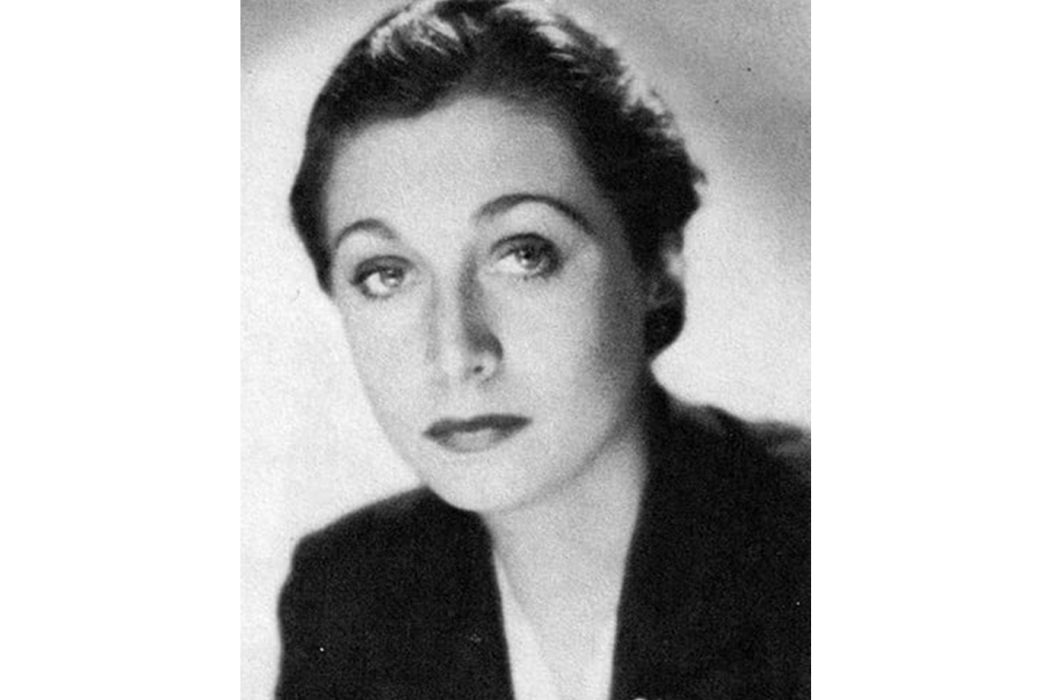Aline MacMahon,演員、影視原聲,代表作品《For the Use of the Hall》。
基本介紹
- 外文名:Aline MacMahon
- 出生地:McKeesport, Pennsylvania, USA
- 出生日期:1899年5月3日
- 逝世日期:1991年10月12日
- 職業:演員、影視原聲
- 代表作品:For the Use of the Hall
早年經歷,演藝經歷,個人生活,
早年經歷
Aline MacMahon was born of Scottish-Irish and Russian-Jewish ancestry on May 3,1899, the daughter of William Marcus MacMahon and Jennie Simon MacMahon. Her father went on to become editor-in-chief of Munsey's Magazine, while her mother pursued a theatrical acting career from middle-age and lived to the ripe old age of 107. After the family moved to Brooklyn, Aline was educated at then-prestigious Erasmus Hall High School. She later attended Barnard College where she was graduated in 1920.
演藝經歷
MacMahon first appeared onstage in 'The Madras House' at the Neighbourhood Playhouse Theater and subsequently made her bow on Broadway in 'The Mirage' in 1921. During the 1920s, she had a prolific career on Broadway, first, as a comedienne adept at impersonations (notably, in 'The Grand Street Follies' and 'Artists and Models'). By 1926, she proved to be equally adept at dramatic roles, making an impact in Eugene O'Neill's 'Beyond the Horizon'. Noël Coward described her as "astonishing, moving and beautiful", while critic Alexander Woollcott commented on her 'extraordinary beauty, vitality and truth' (New York Times, October 14, 1991). Her distinguished career on the stage went on for five and a half decades, highlighted by many critically acclaimed performances in plays like 'The Eve of St. Mark' (1942-43), 'The Confidential Clerk' (1954), 'Pictures in the Hallway' (1956) and 'All the Way Home' (1960-61). Her somewhat melancholic, heavy-lidded and thickly eye-browed features inspired sculptor Isamu Noguchi and photographer Cecil Beaton.
MacMahon's film career began on the strength of her wisecracking voice-culture teacher, May Daniels, in the Kaufman and Hart comedy 'Once in a Lifetime', which she had created onstage in Los Angeles in 1931. She reprised her role on screen the following year and was, prior to that, cast in similar roles as feisty secretaries in Five Star Final (1931), (her debut) and The Mouthpiece (1932). Gold Diggers of 1933 (1933) afforded her a well-received co-starring role as the hard-boiled "Trixie Lorraine". McMahon managed to escape typecasting with several strong dramatic performances: Edward G. Robinson's sad, cast-off wife in Silver Dollar (1932); the sympathetic self-sacrificing Mrs. Moore of The Life of Jimmy Dolan (1933); her co-starring role as Guy Kibbee's long-suffering wife Myra in Babbitt (1934); and kindly spinster aunt Lily Davis in Ah, Wilderness! (1935). She effortlessly made the transition from Pre-Code films to Post-Code.
In the 1940s, she began playing lower-billed character parts, but was nominated for an Academy Award for her performance as the Chinese mother of Katharine Hepburn's character, Ling Tan, in Dragon Seed (1944). After that, she played a succession of gentle mothers and grandmothers, as, for example, in The Eddie Cantor Story (1953). She was also occasionally employed in meatier outdoor roles in anything from swashbucklers, like The Flame and the Arrow (1950), to westerns, such as her ranch owner in The Man from Laramie (1955). More exotically cast, she portrayed James Darren's Hawaiian mother, Kapiolani Kahana, in Diamond Head (1962). In her last motion picture performance, she recreated her stage role as Aunt Hannah for the Paramount film version of All the Way Home (1963). Based on the novel 'A Death in the Family' by James Agee, the picture was a huge success with the critics but performed less well at the box office.
個人生活
Aside from a handful of guest appearances on television, she retired from the screen after 1964 and died of pneumonia at her Manhattan home at the age of 92 in 1991. She was married to Clarence S. Stern who predeceased her in 1975.

